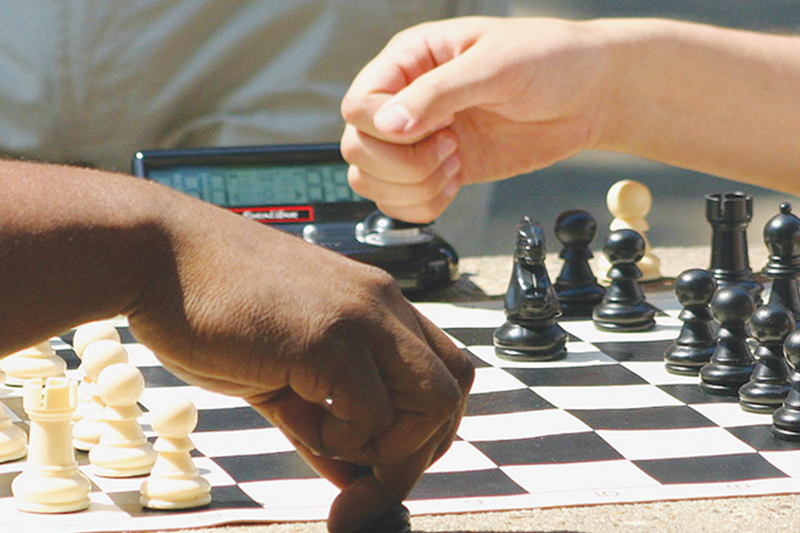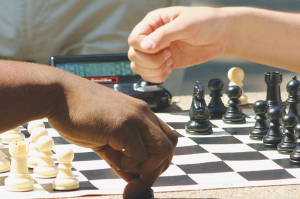BY JOYCE NANETTE JOHNSON, Staff Writer
ST. PETERSBURG – Chess is more than just a board game to James Randolph. The basic concept of chess is the strategy involved and he feels you must have a life strategy to achieve success.
Randolph has been an avid player since being introduced to the game when he was in the 10th grade at Gibbs High School.
“Chess can [help] you to become a better thinker,” he said. “It teaches deductive reasoning. You have a more scientific way of looking at life and you’re a more rational person.”
Chess originated in 600 A.D. in India, then spread to Persia, and from Persia the world was introduced to this board game that has pieces with names reminiscent of a bygone era of royalty such as king, the queen, bishop, knight, rook and pawn that are all poised in “battle” to overcome the opposition.
The object of the game is to checkmate (threatened with capture) the opponent’s king. When the king is placed in check and the check cannot be defended, the game is over.
Randolph explained the intricate moves and pieces:
-
Pawns are the foot soldiers. They move two squares on their first move and one square thereafter. They can only capture pieces diagonally.
-
Bishops move diagonally and capture only on their color. One bishop moves on white squares and the other bishop moves on dark squares.
-
The knight moves in a capital “L” shape and can jump over other pieces. Because of the knight’s unusual movement, it can attack several pieces simultaneously. This ability of the knight is called a fork.
-
The rook, or castle as it is sometimes called, moves horizontally and vertically. As long as its path is unobstructed, it can move any number of squares in its direction and capture any undefended piece of the opponent.
-
The queen is the most powerful piece on the board. It possesses the movements of the bishop and the rook. The queen can move any number of unobstructed squares vertically and horizontally. Combined with any other piece, the Queen can quickly give checkmate to the opponent’s King.
-
The king can move only one square at a time in any direction as long as his path is unobstructed and he is not moving into check, which is illegal.




